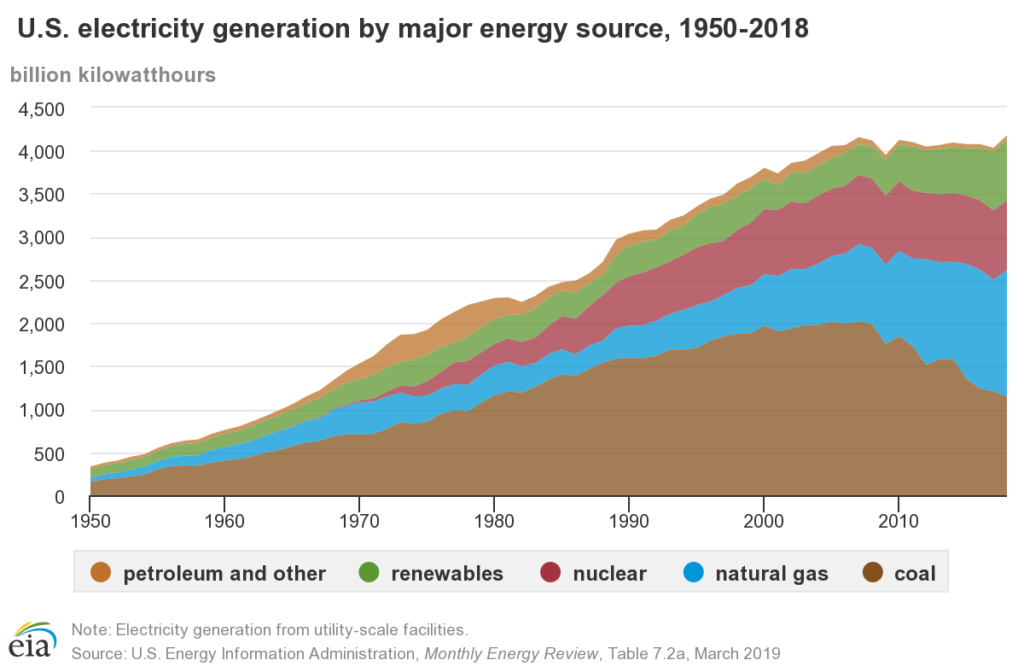In Pearl Jam’s new single “Dance of the Clairvoyants,” lead singer Eddie Vedder offers some up sage advice: “Save your predictions – and burn your assumptions.” He probably wasn’t referring to America’s energy industry when he wrote those lyrics, but he might as well have been.
That’s because the government predictions for American energy sources during the last decade have been wildly off the mark – a compelling reminder of the guessing game all of us are playing when it comes to trying to predict the future.
“Change can happen rapidly and unexpectedly, even in an industry known to move gradually and predictably,” observed Amy Harder and Andrew Witherspoon in a recent piece detailing the missed projections published by Axios.
Harder and Witherspoon compared projected versus actual data from the U.S. Energy Information Administration (EIA) – an entity whose short-term fuel projections we referenced in a recent piece on gasoline prices in our home state of South Carolina.
When it comes to long-term projections, though, the EIA might as well have been playing pin the tail on the donkey.
For starters, the agency dramatically underestimated the impact of the ramp-up in domestic oil production. In 2010, America was expected to be producing 6.1 million barrels of oil per day by 2019. Instead, as of last September it was producing more than twice that amount – 12.5 million barrels.
As a result, instead of importing an estimated eight million barrels of crude oil and petroleum per day, our nation is actually a net exporter.
That’s just one of the major misses …
According to EIA projections, America was expected to crank out 19.8 trillion cubic feet of natural gas by 2019 – roughly the same level as 2010. Instead, it produced 30.6 trillion cubic feet in 2018 – the last year for which complete data is available.
That represents a whopping 54.5 percent increase for a metric that was supposed to remain flat.
When it comes to America’s electric grid, coal was supposed to dominate – accounting for 2.1 trillion kilowatt hours in 2019 (up from 1.75 trillion kilowatt hours in 2010). Instead, coal has cratered to 1.1 trillion kilowatt hours and now trails natural gas as the leading source of electricity in our country (which accounted for 1.5 trillion kilowatt hours instead of the 650 billion projected).
As for renewables, they comprised 736 billion kilowatt hours in 2018 – well above the 502 billion kilowatt hours originally projected.
Take a look …
(Click to view)
(Via: EIA)
One last note: The surge in natural gas has had a tremendously beneficial impact on carbon dioxide emissions (something we have referenced in previous coverage).
Back in 2010, EIA projections called for there to be 5.8 billion metric tons of carbon dioxide emitted in 2019 – up from 5.5 billion. Instead, carbon dioxide emissions actually declined to 5.3 billion metric tons – driven by natural gas supplanting coal.
“The same one-two punch that drove natural gas to dominate over coal in the electricity mix has driven this change,” Harder and Witherspoon noted. “More recently, the growth in wind and solar, which don’t produce emissions, is accelerating this trend.”
Burn your assumptions, indeed.
The takeaway? While it is vitally important to try and understand where we are headed as a nation on a host of fronts – including the energy sources that power our lives and our economy – we must also remember that such prognostication is fraught with uncertainty.
The good news? In this case, we would argue things have turned out better than the government predicted … a trend we certainly hope will continue over the decade to come.
-FITSNews
***
WANNA SOUND OFF?
Got something you’d like to say in response to one of our articles? Or an issue you’d like to address proactively? We have an open microphone policy! Submit your letter to the editor (or guest column) via email HERE. Got a tip for a story? CLICK HERE. Got a technical question or a glitch to report? CLICK HERE.
(VIA: GETTY IMAGES)


